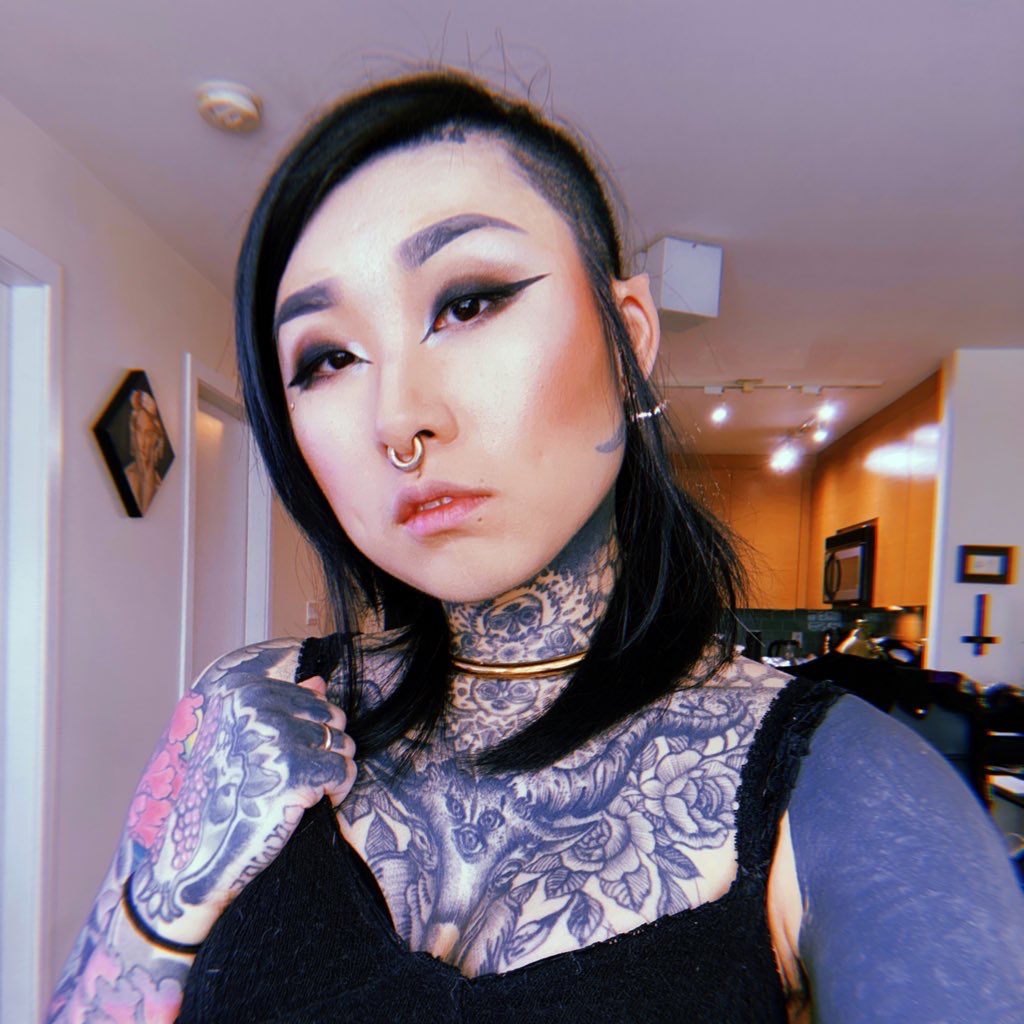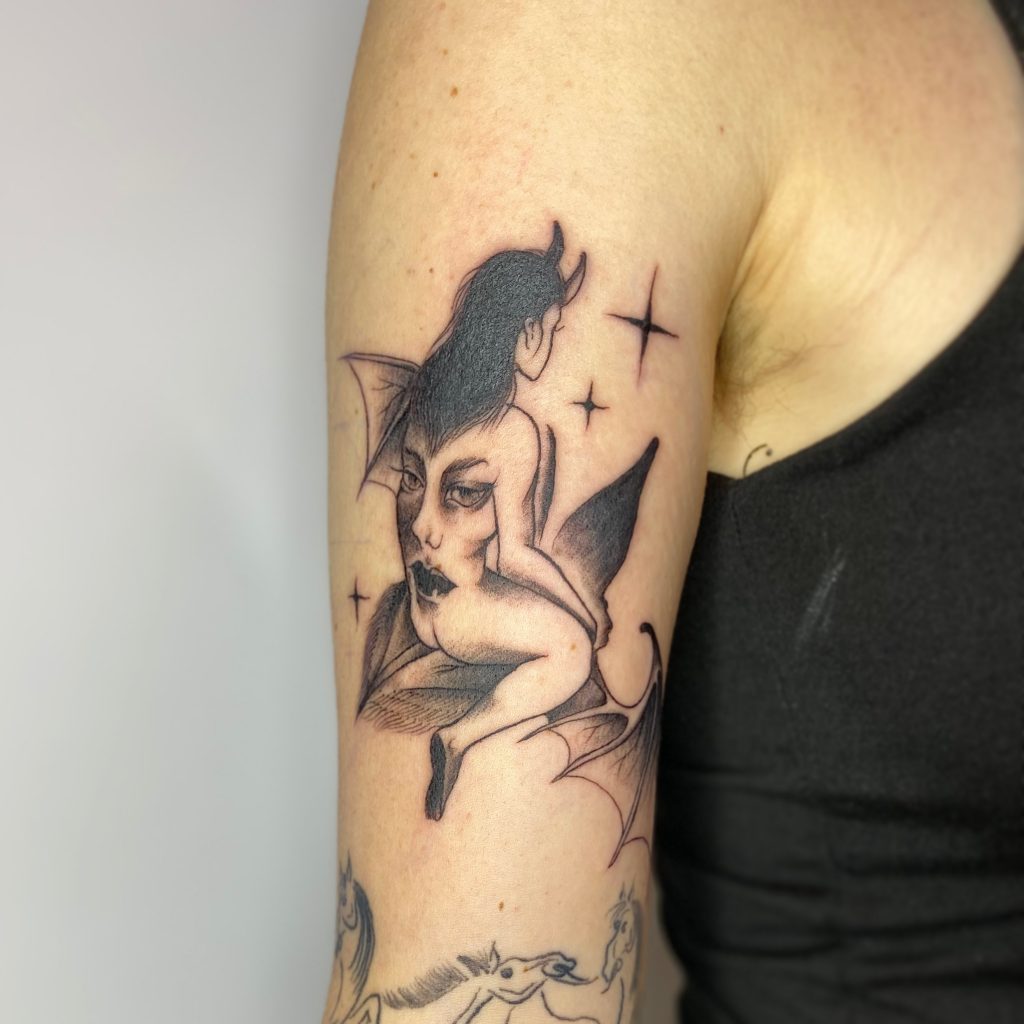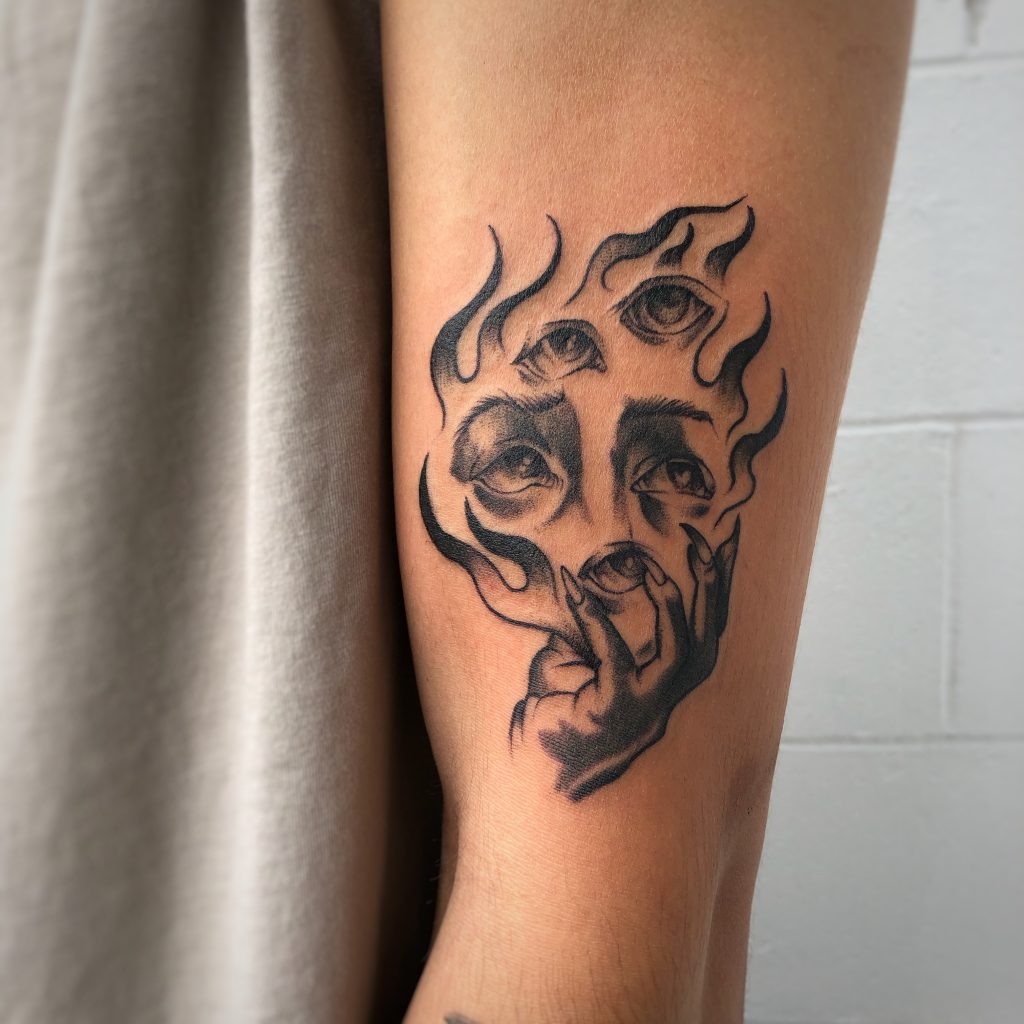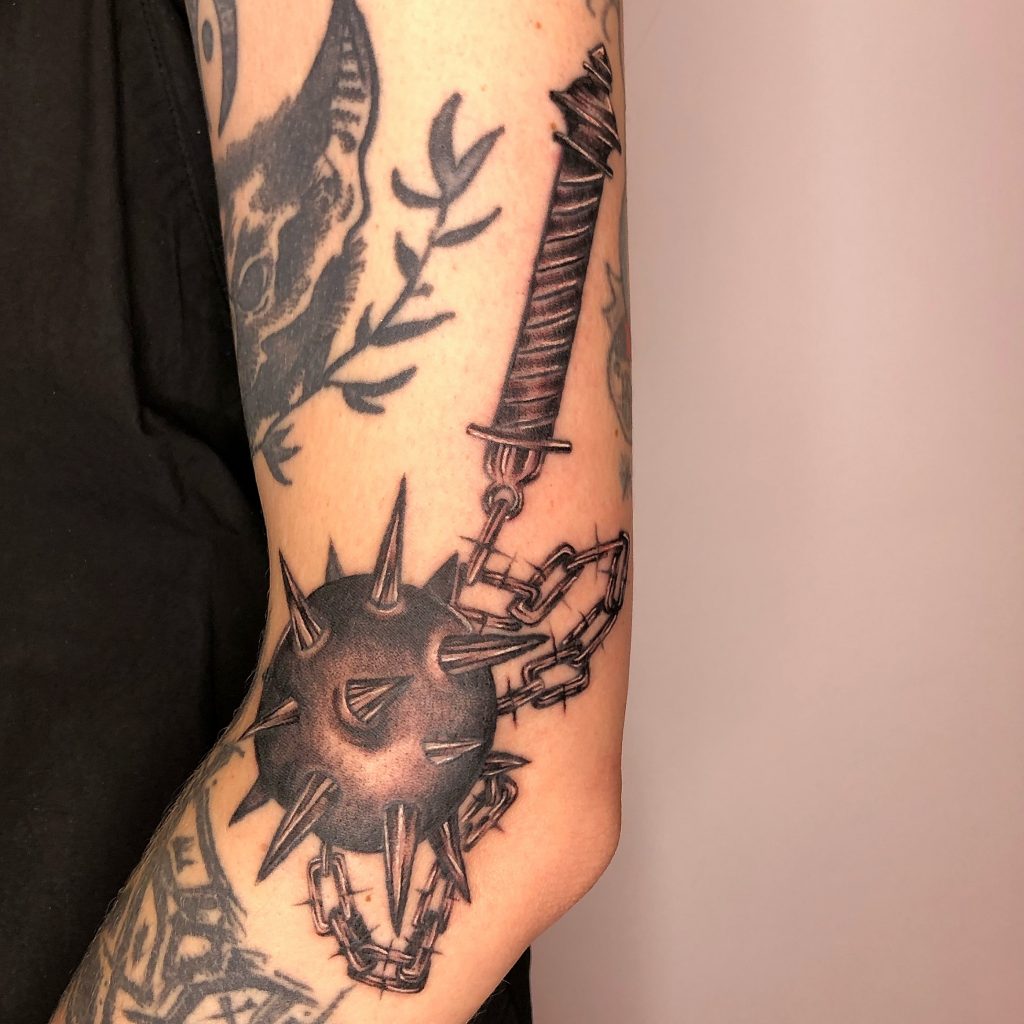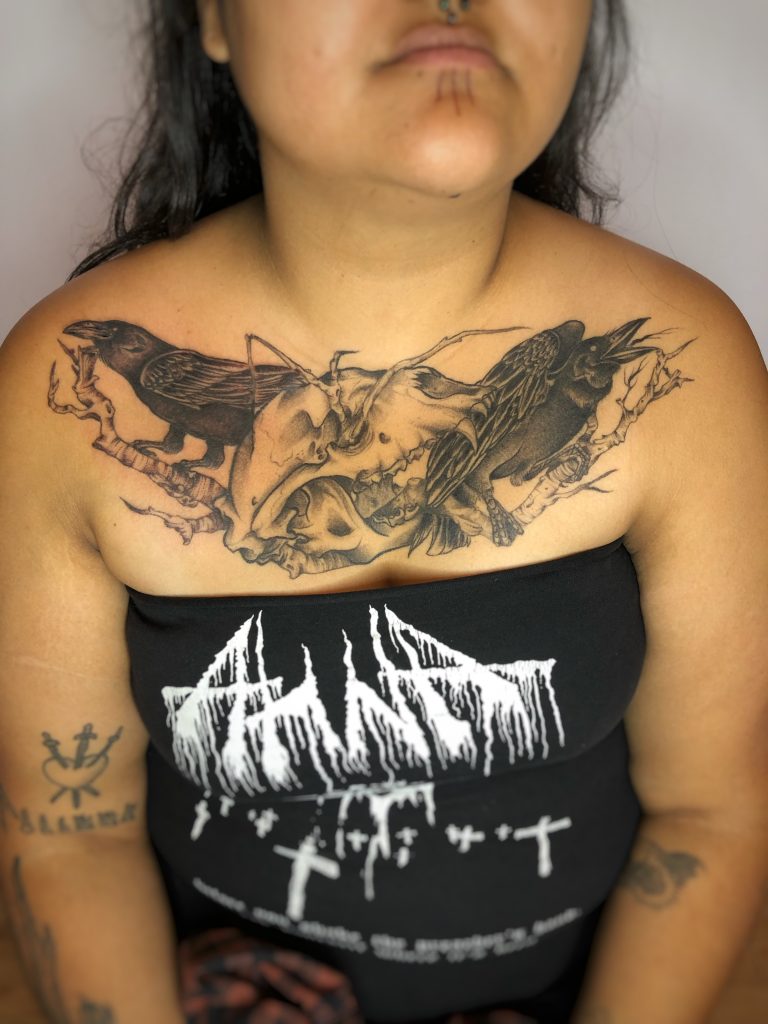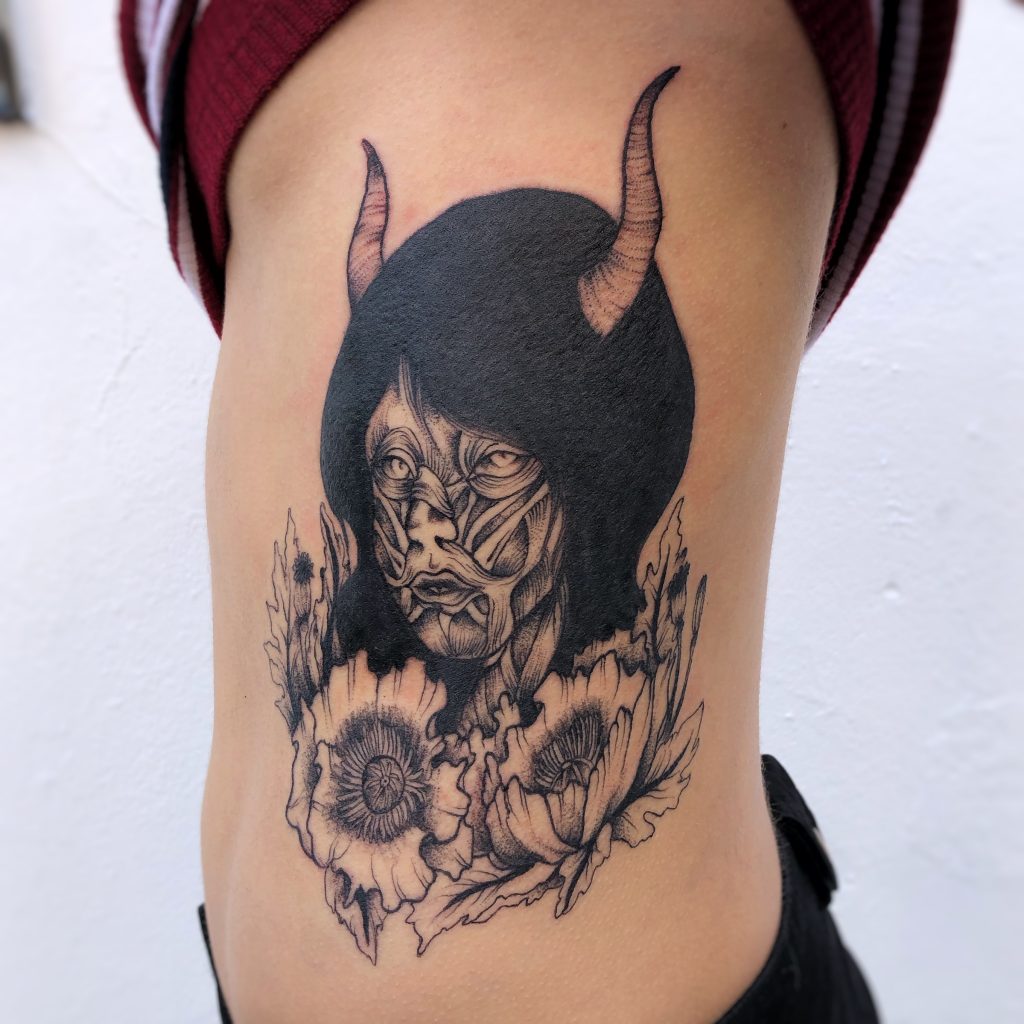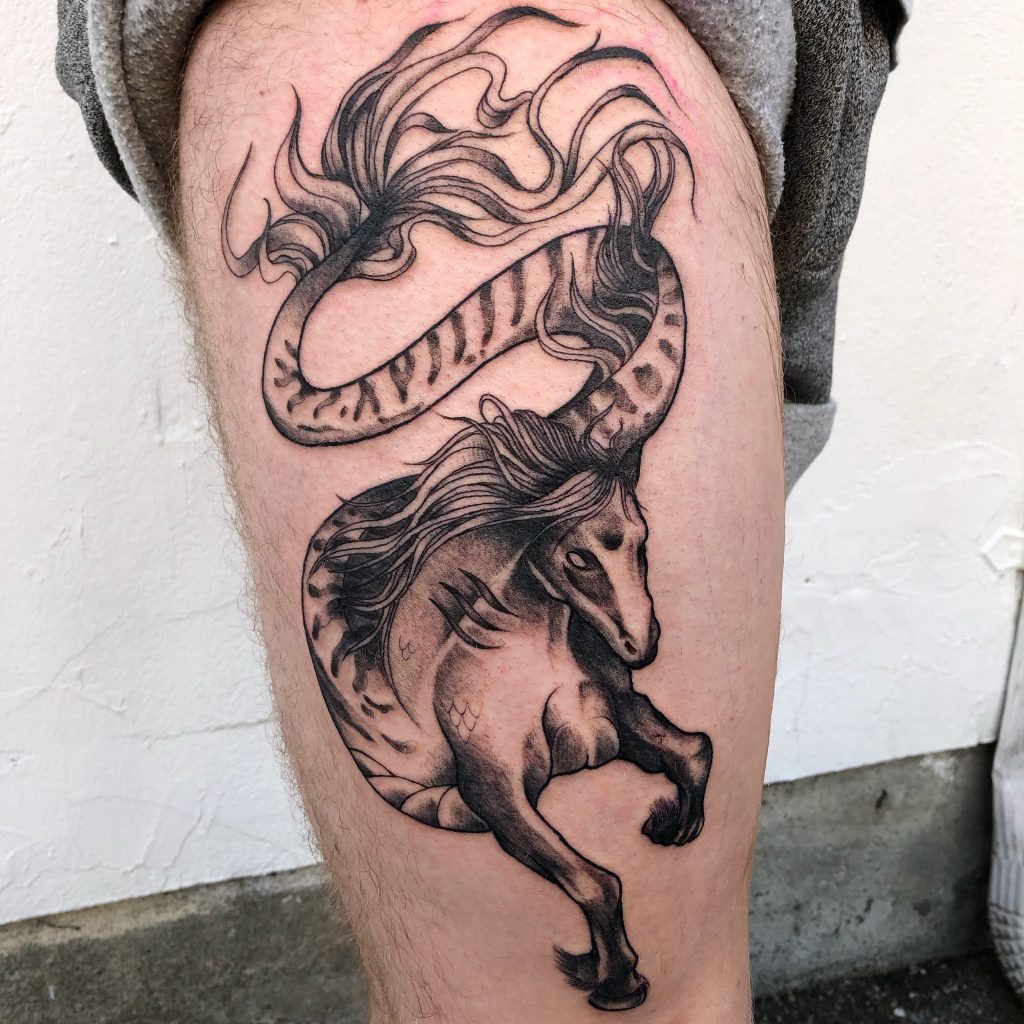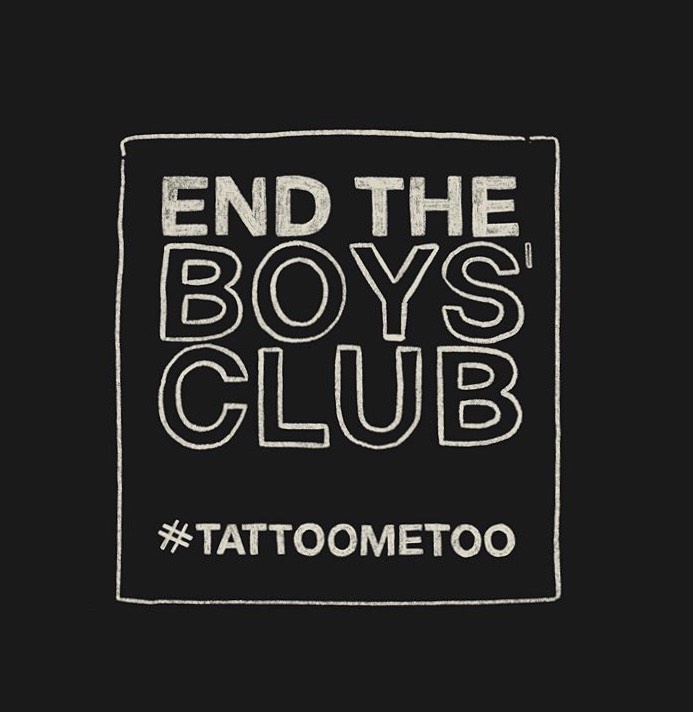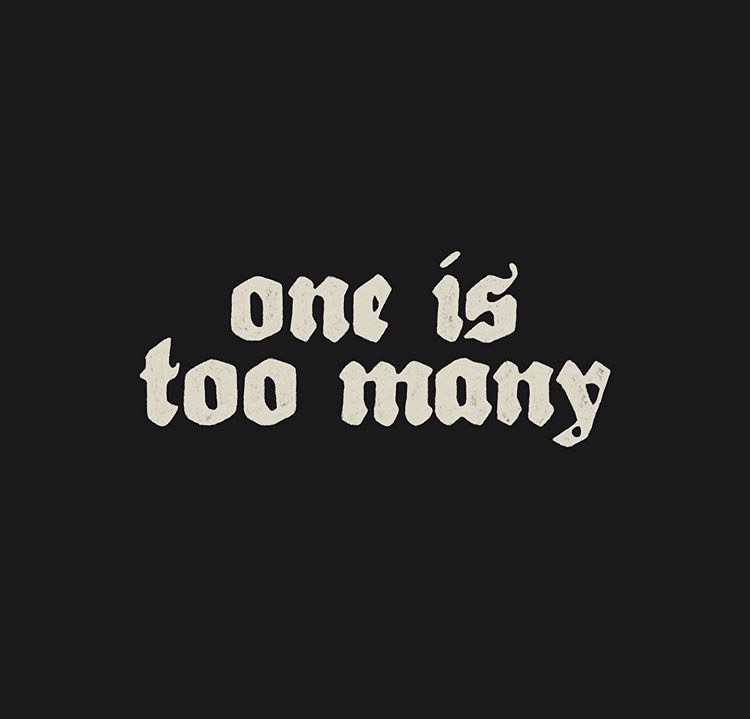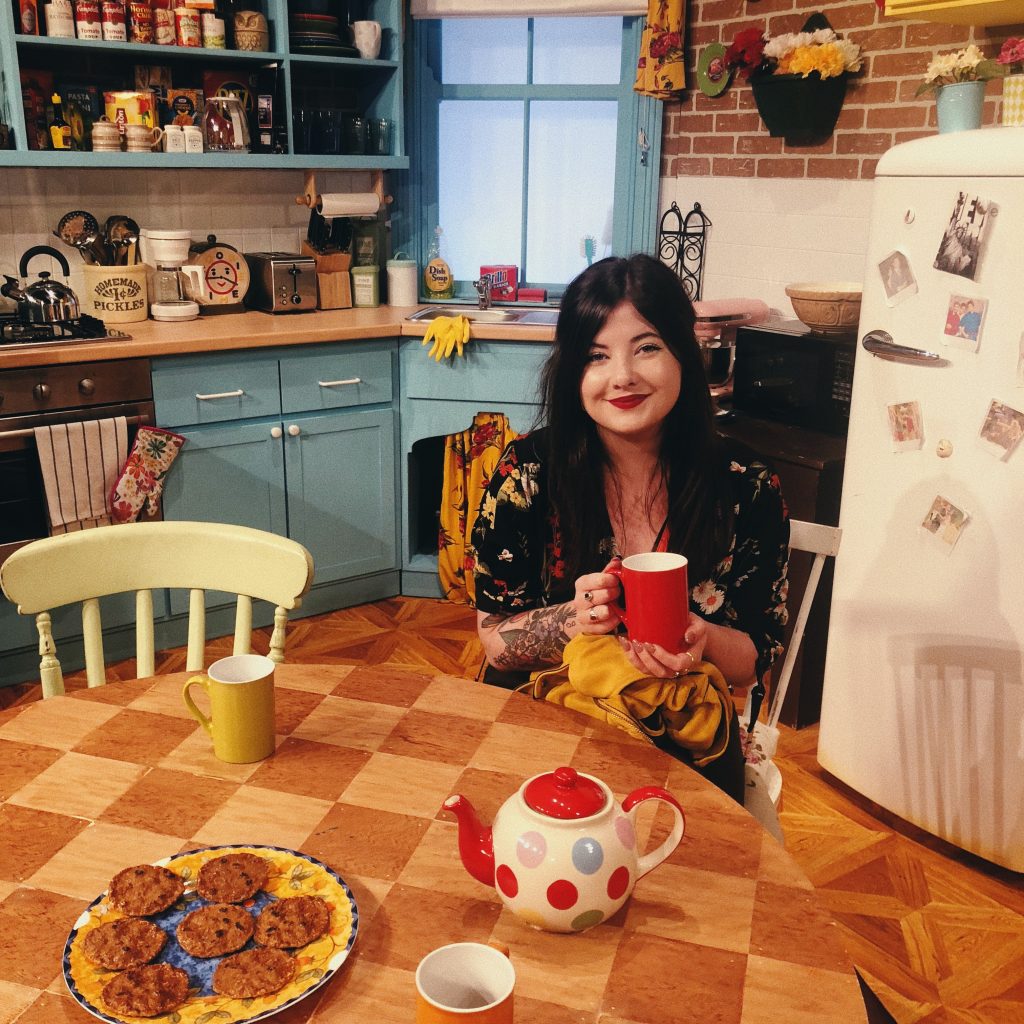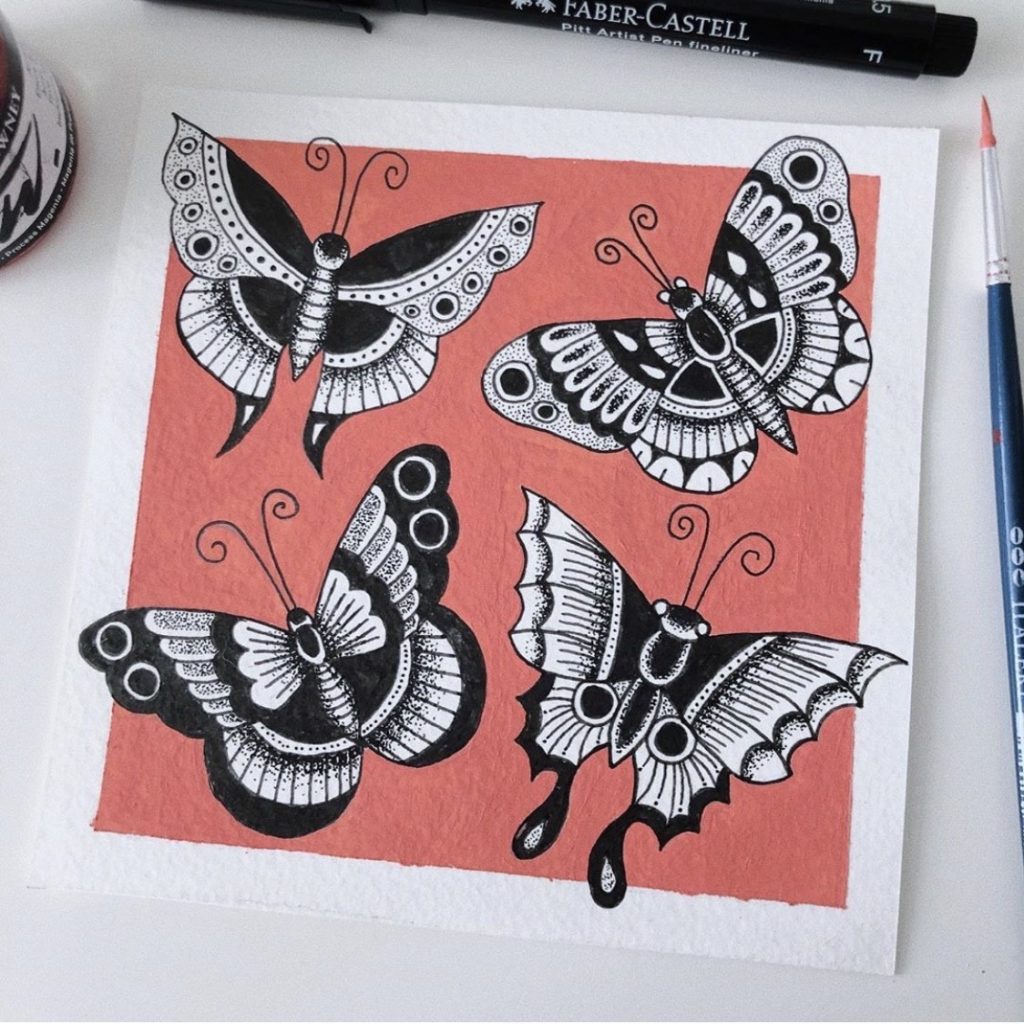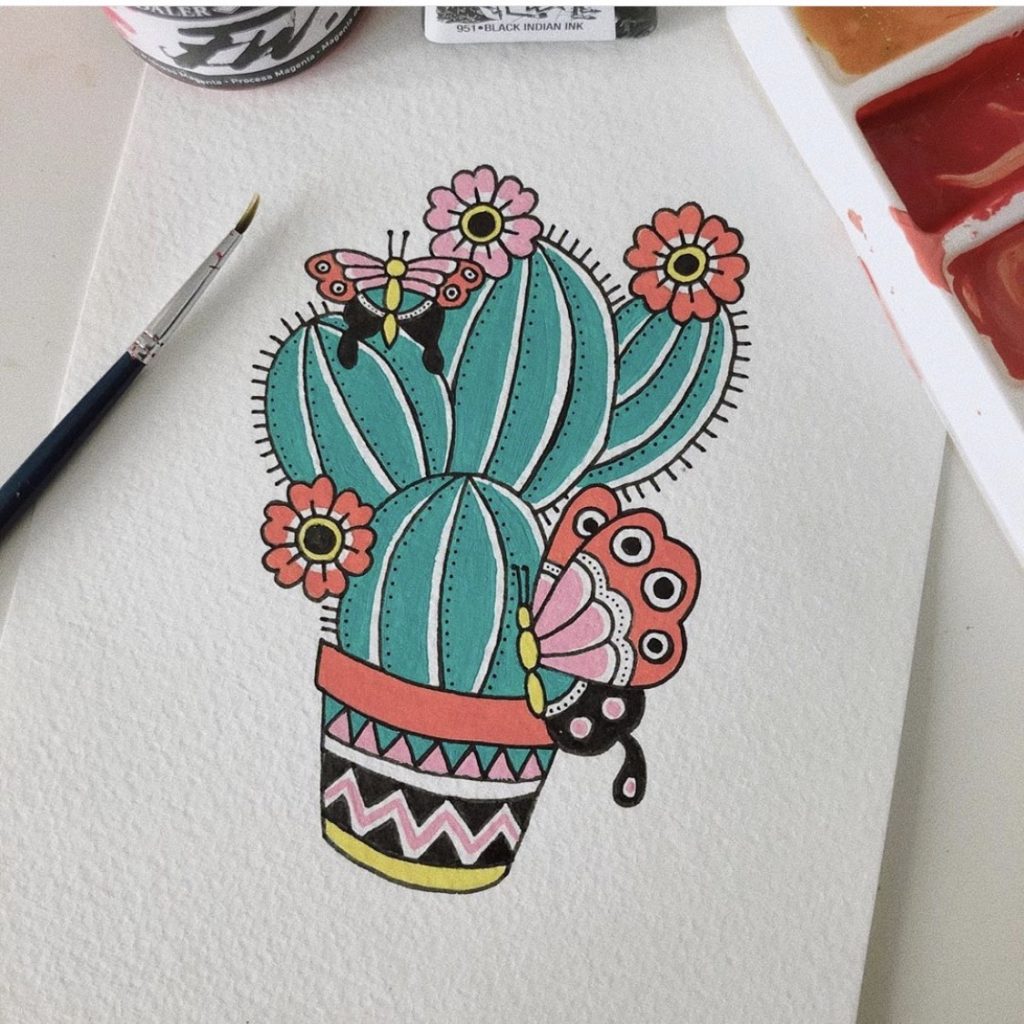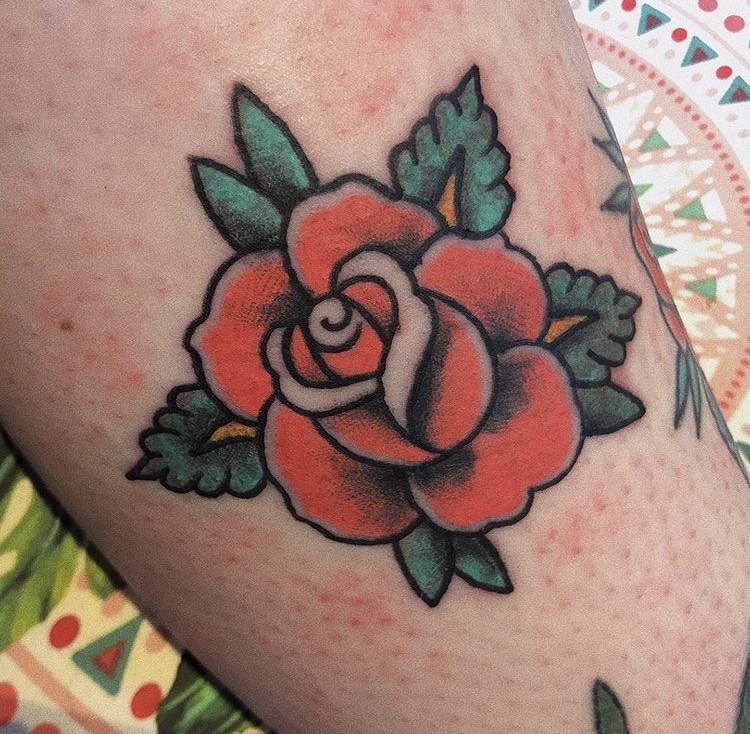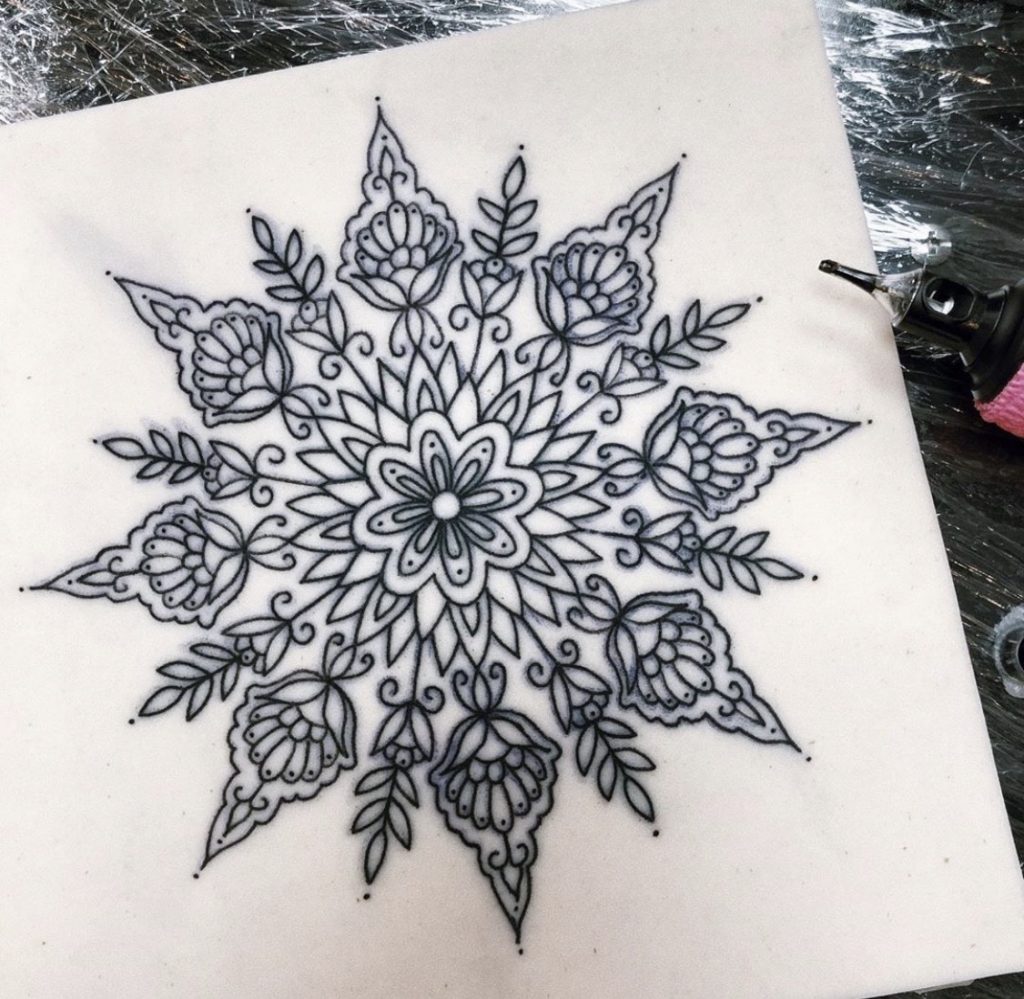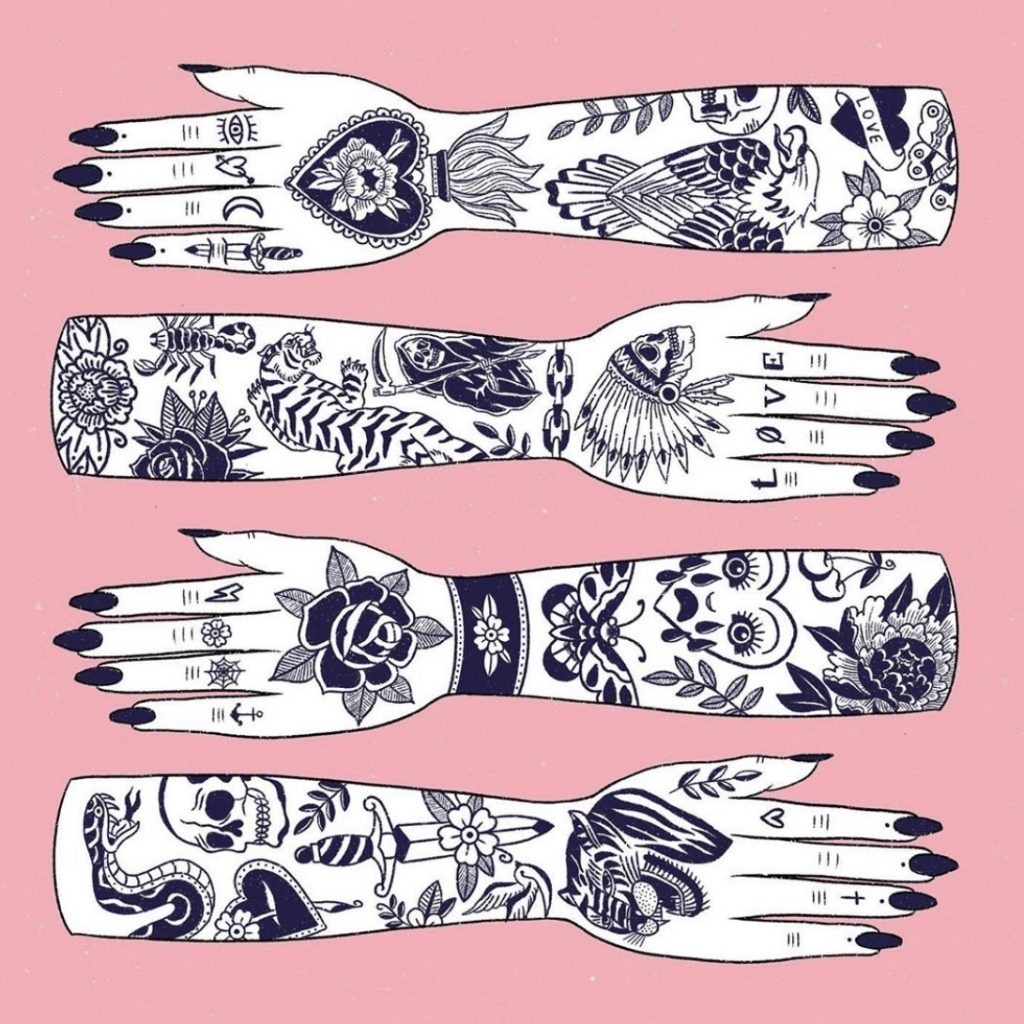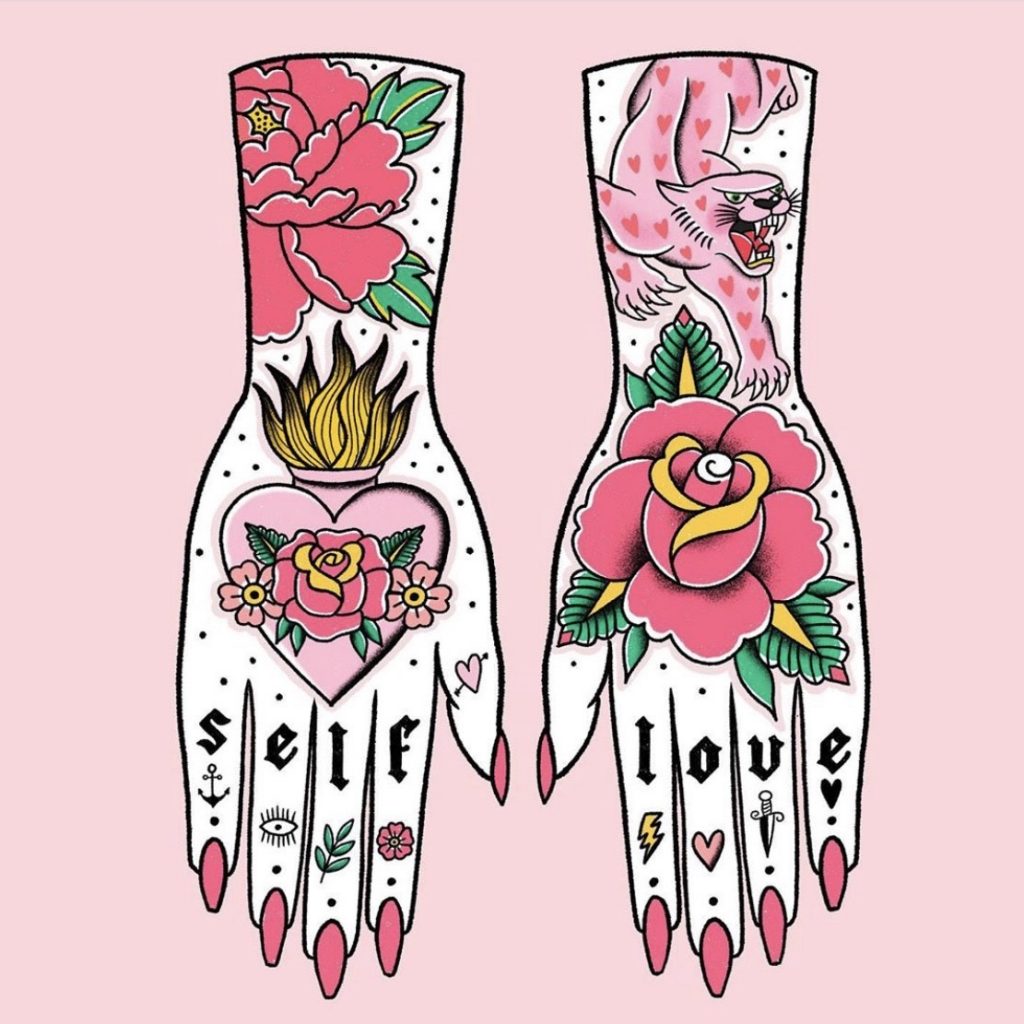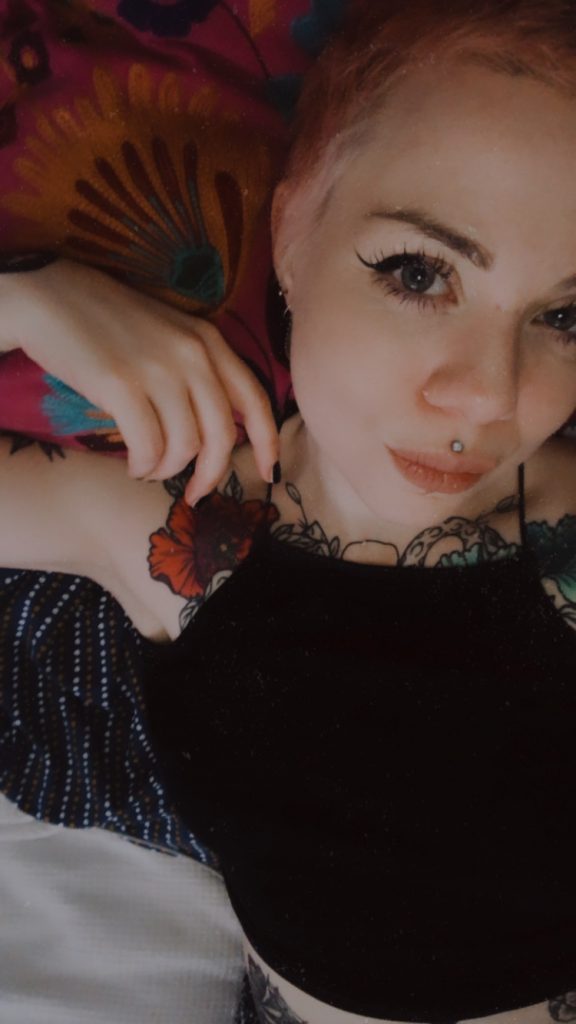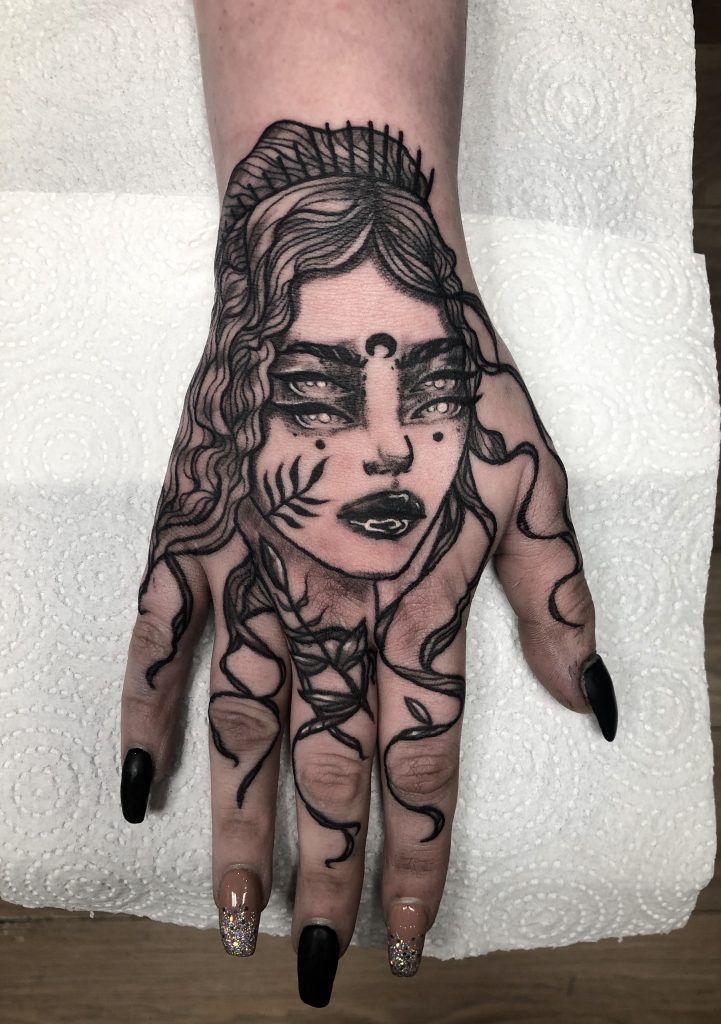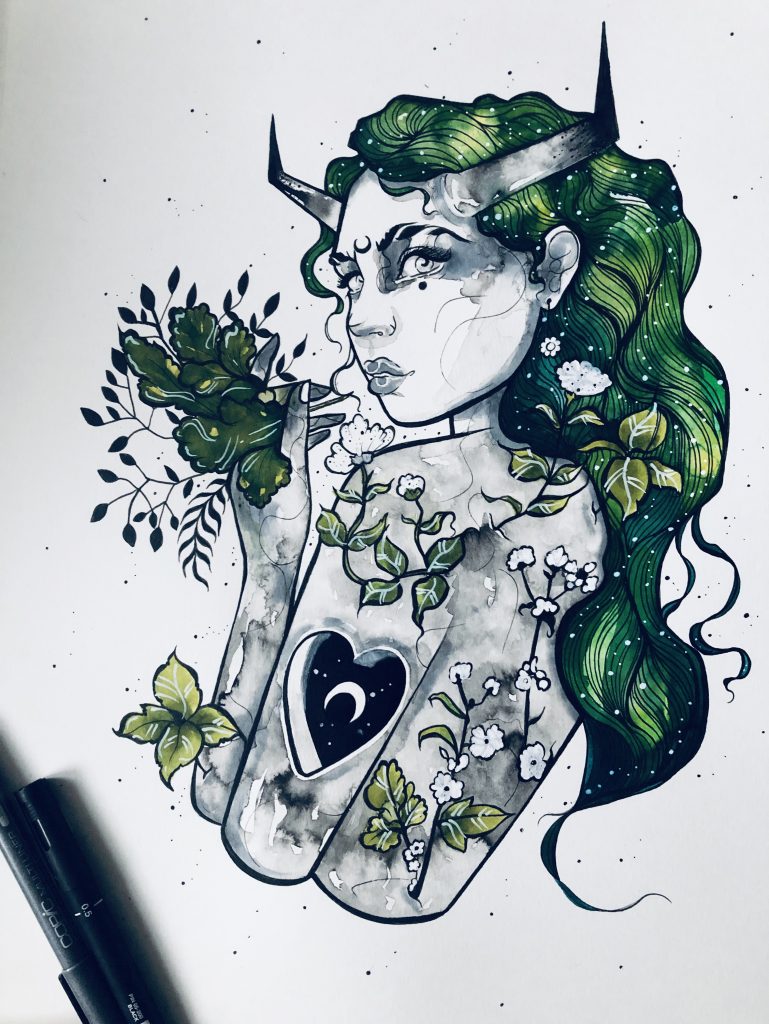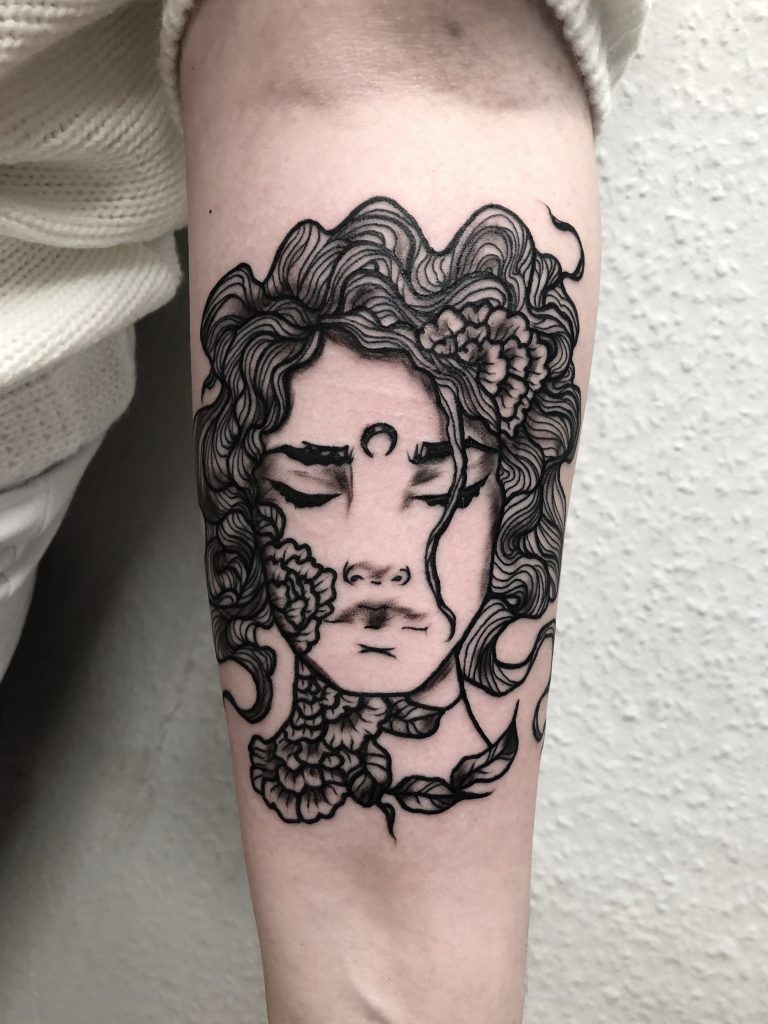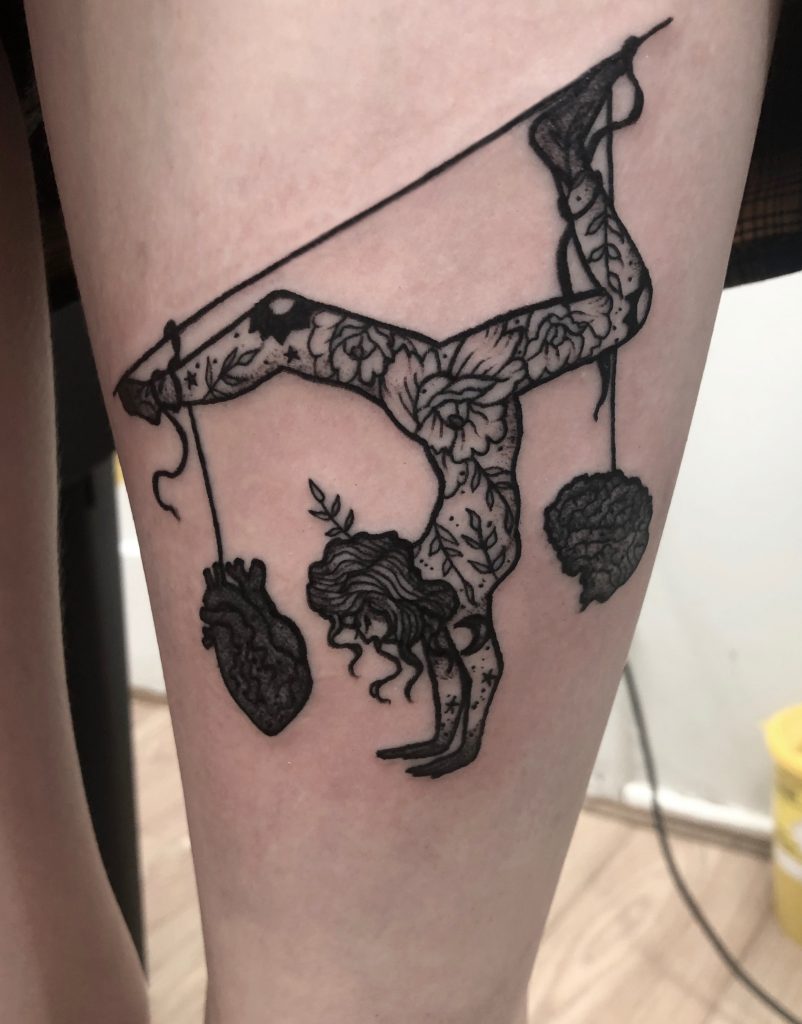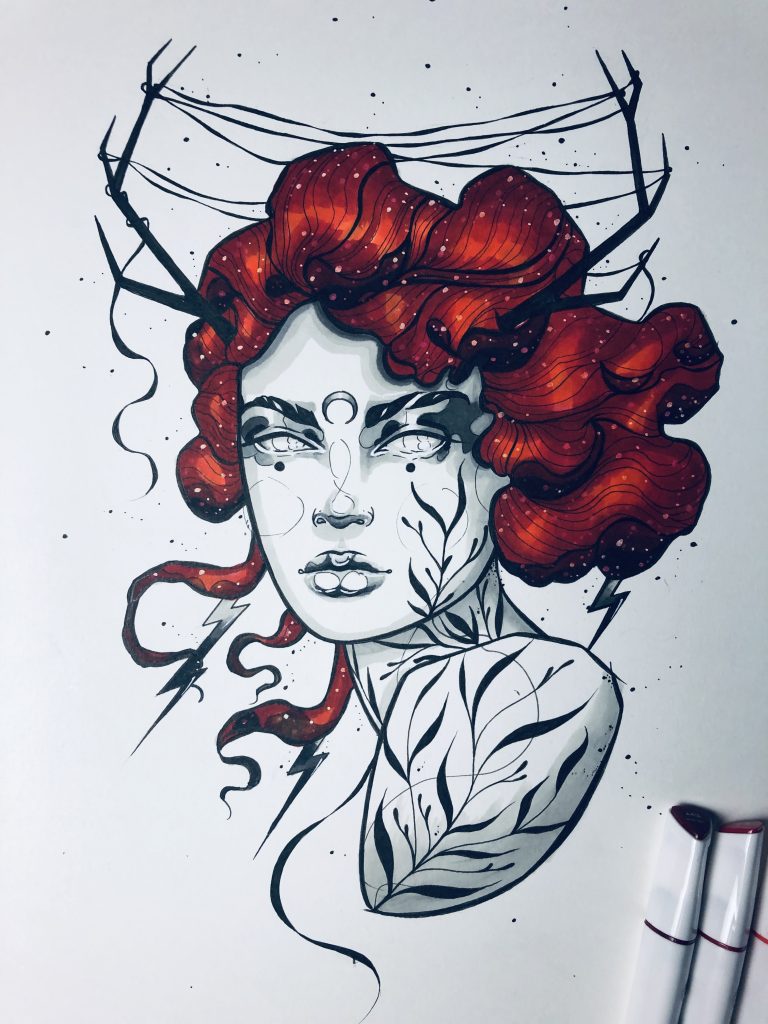As we scrolled through Instagram looking for new artists, budding tattoo apprentice Jade’s four-eyed women drew us in. We were captivated by bedroom scenes, bright pops of colour and striking murals – we had to find out more about this tattoo apprentice, who works at the all-female Heartless Tattoo in Los Angeles…
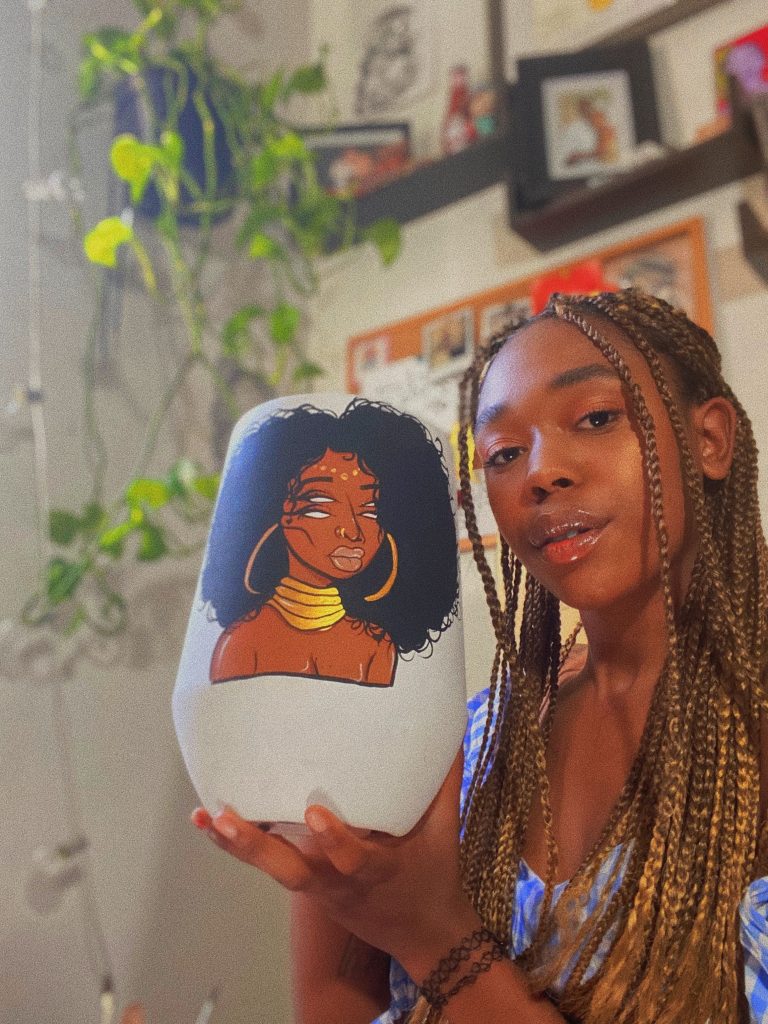
How long have you been a tattoo apprentice, and how did you get your apprenticeship? I started my journey back in November. I was apprenticing at a shop in Beverly Hills that was black owned, which was really dope. I was there for a few months but unfortunately that opportunity was cut short. Even though I wasn’t there long, I was able to absorb a lot of important information about what it is like to tattoo darker skin, which is very important for me as an artist.
Honestly, I got my first apprenticeship just being at the right place and right time. After leaving my first apprenticeship, I was offered another opportunity to continue my journey at an all Woman of Color shop located in Los Angeles, Heartless Tattoo. The owner of Heartless, Yher, has been a long time inspiration of mine and friend and she told me when I was ready, she had a home for me. I couldn’t be more grateful for my Heartless family!
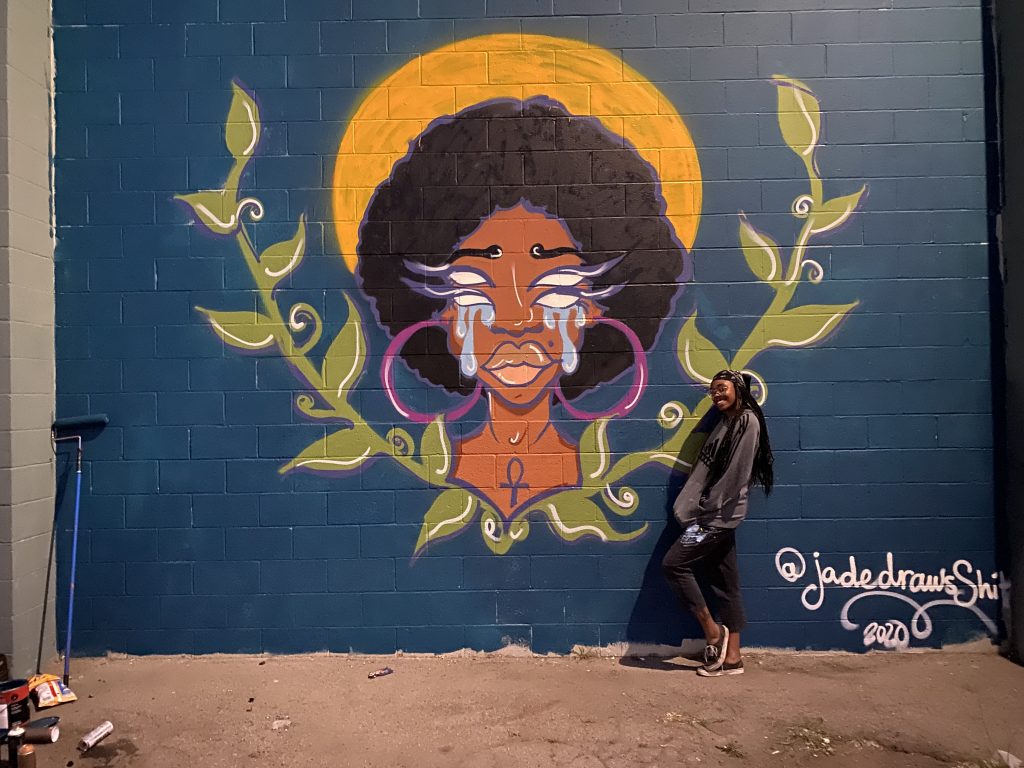
What advice would you give to anyone wanting to get started in the tattoo industry? I would tell them to put themselves out there as an artist, make connections, continue to practice your craft. Nothing is just handed to you. Living out your dream consists of hard work, dedication, and practice. Also, I would tell them to make sure that this industry is something that you’re genuinely passionate about and that you’re ready to sacrifice for it. Pay respect to those who did it before you and the history behind it as well.
Can you share with us your experience as a woman in the tattoo world, and your experience as a black woman in this industry? So far so good. The shop that I’m at is an all female shop so it’s really nice to be around feminine energy, especially in such a male-dominated industry. As I get further into the industry, I know that there will of course be some hardships for not only being a woman but also a black woman, but I am here for the fight and representation.
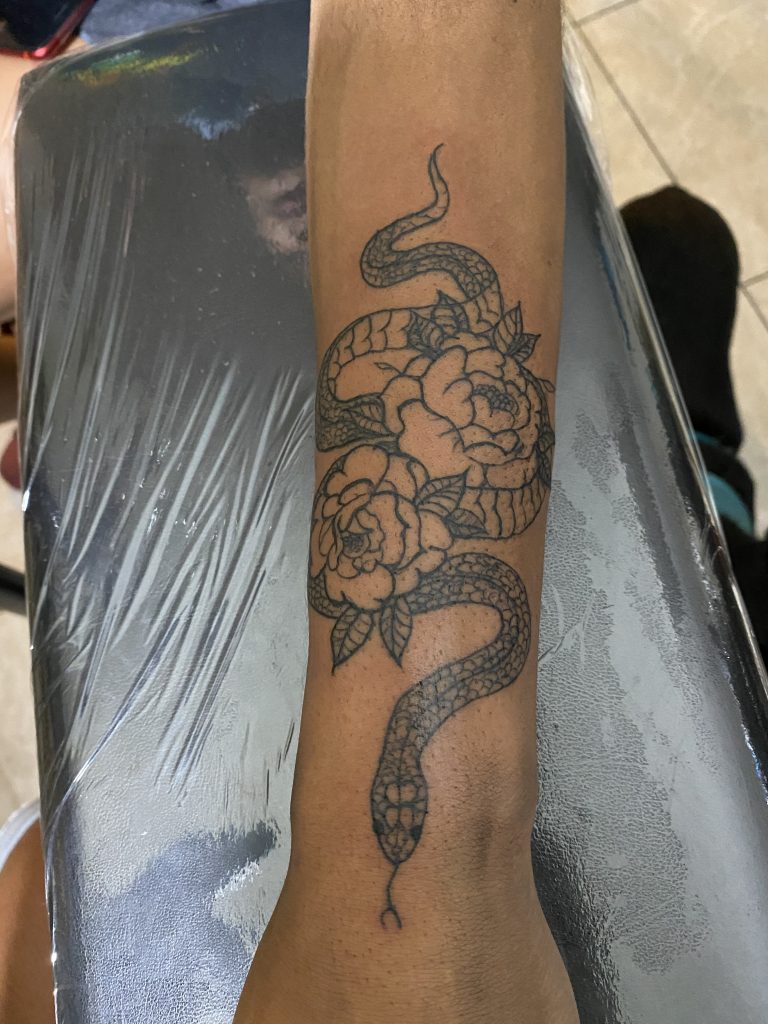
What’s the tattoo scene like in LA? LA has so much history and has played a HUGE part in the tattoo culture and history. From Ed Hardy to GoodTime Charlie, to Freddy Negrete and Mister Cartoon, they paved the way for us artists and put LA/SoCal tattooing on the map. It’s crazy I can call this place my home and just be surrounded by so much history. It’s very normal to see people blasted in tattoos in LA, it’s very accessible to get tattooed out here. It’s very normal. You will drive down Melrose Ave, and pass like 10 shops within a two mile radius. It’s quite interesting!
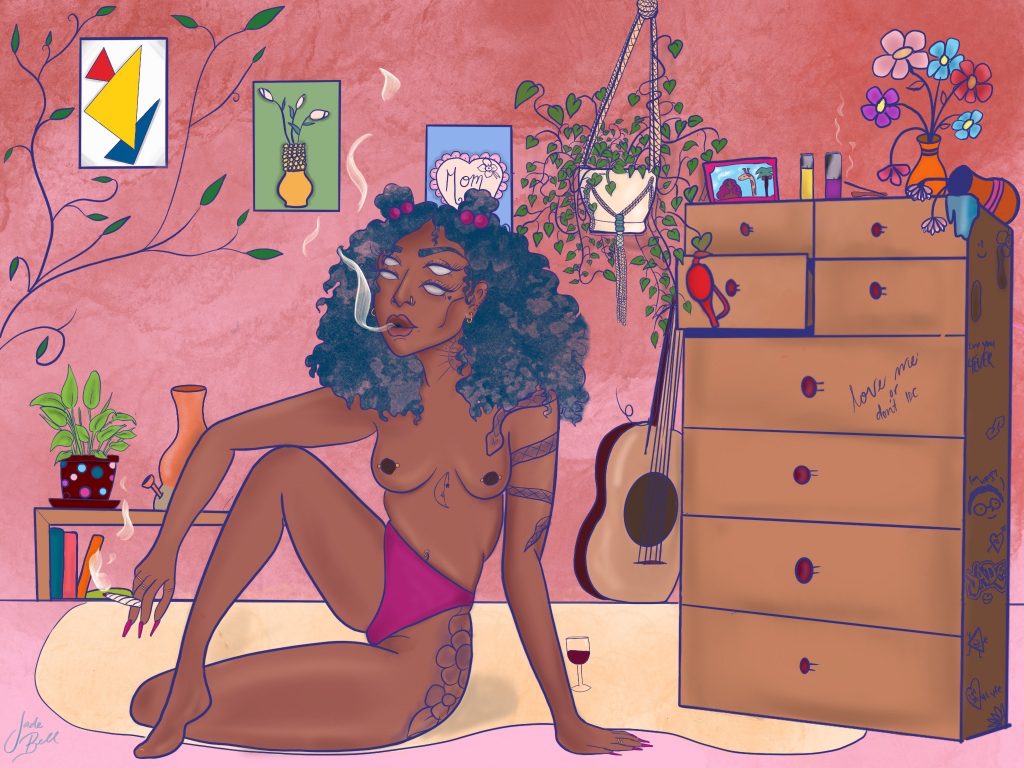
We love your double-eyed girls, what inspires your illustrations? I’ve always been inspired by black women and women of color. The four-eyed girl is how I add a little me into every painting. I’ve been wearing glasses since third grade and being called four-eyes has always been a thing, so I just re-channelled it into my world. When I got serious about my art, I wanted to create something that looked like me and the people who also look like me. I realized that a lot of the artists I looked up to weren’t depicting black women (up until recently honestly). And I wanted to create something that I would’ve loved to see when I was a kid.
Are there any artists or tattooers you look up to or influence your work? There is a list of people who I look up to and influence my work. I can talk about them all day honestly. Tattoo wise, my Heartless family inspires me every single day, I can’t believe I’m surrounded by such talented, cool ass people. I’m also inspired by Doreen Garner (@flesh_and_fluid), Brittany Randell (@humblebeetattoo), K. Wong (@kwongtattoo), and Lydia Madrid (@lydiamadriid). My art influences are Christina Martinez (@sew_trill), @reesabobeesa, Natasha Lillipore (@lillipore), Hailey Losselyongs (@hai_ey), and Tamia Blue (@tamiablue).
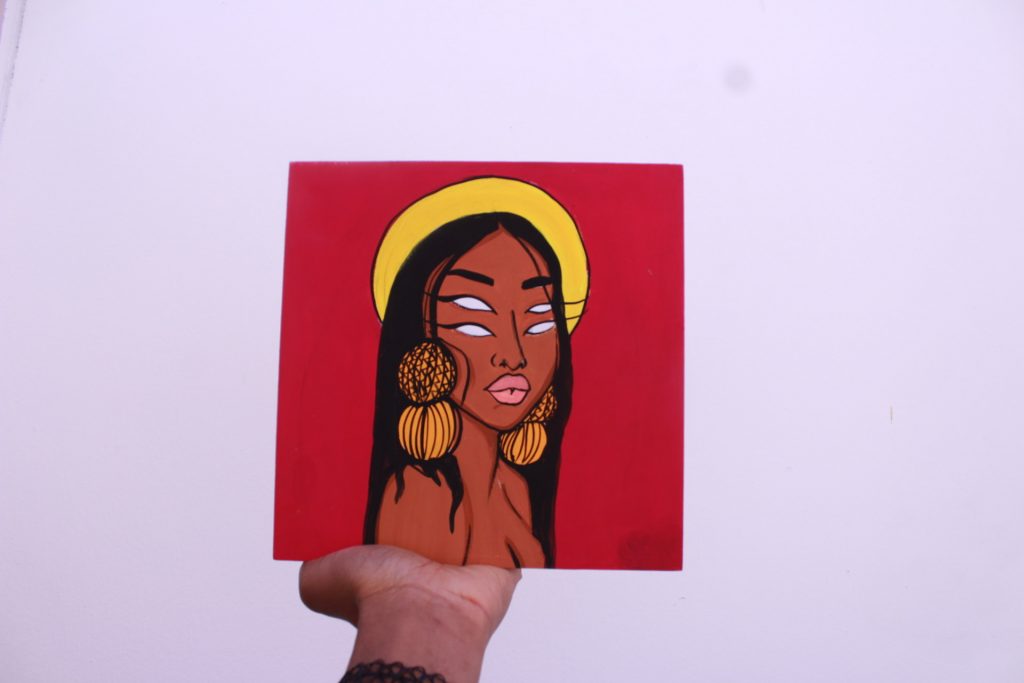
What do you like to draw/tattoo and what do you want to do more of? I love drawing my girls and I want to be able to tattoo them as well as my original art.
How would you describe your style? Where do you want to take your tattoos in the future? I would describe my art style as illustrative for sure. But as far as my tattoo style I want to push my work as neo-traditional and show black art in the neo world.
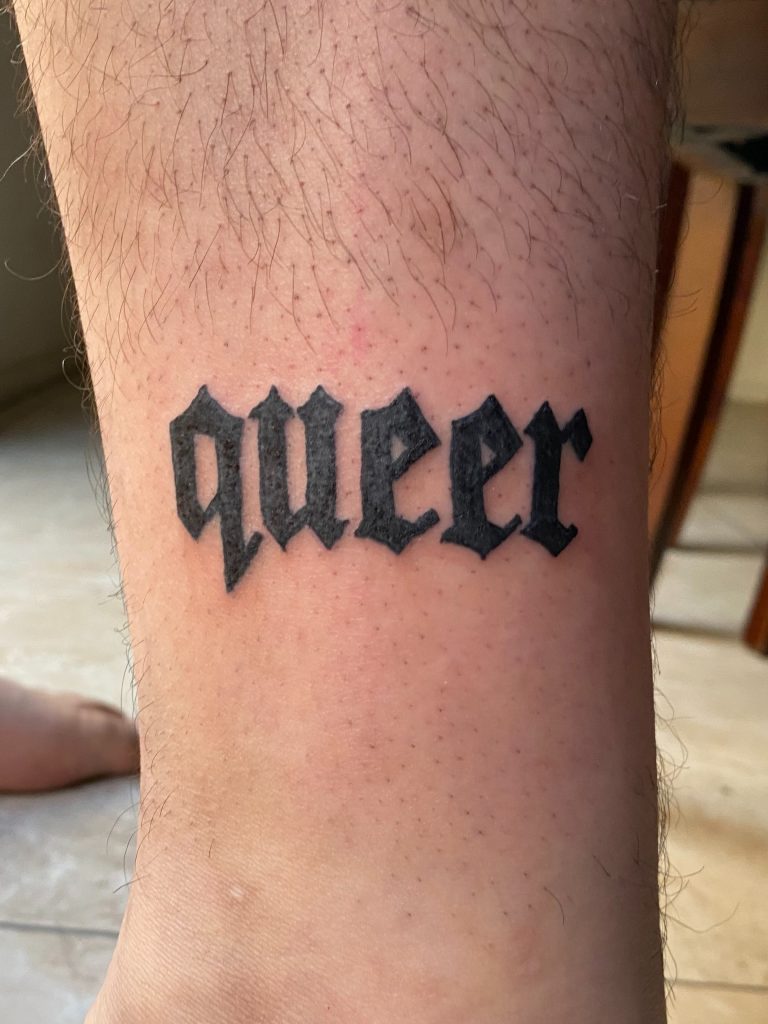
Can you tell us about your own tattoo collection, what was your first, which is your favourite? I’ve been collecting tattoos since my eighteenth birthday. Both my mom and step dad are heavily tattooed so my mom literally dropped me off at the tattoo shop on my birthday. My first tattoo is a hamsa with a Ganesha inside on my rib. That’ll forever hold a special place in my heart since it was my first, however I don’t have any favorites. I think for the most part my tattoos are badass! There’s a couple that I definitely wish were different but I still love them and it’s funny to look back at.
Have your tattoos changed how you feel about yourself and your body? DEFINITELY! I couldn’t imagine myself without my tattoos and I am planning on covering the majority of my body. It’s so fun to look at the pieces and be like holy shit that’s my arm.
I feel like they make me, me. It sets me apart from the rest and at the same time I’m a part of a sick ass community.
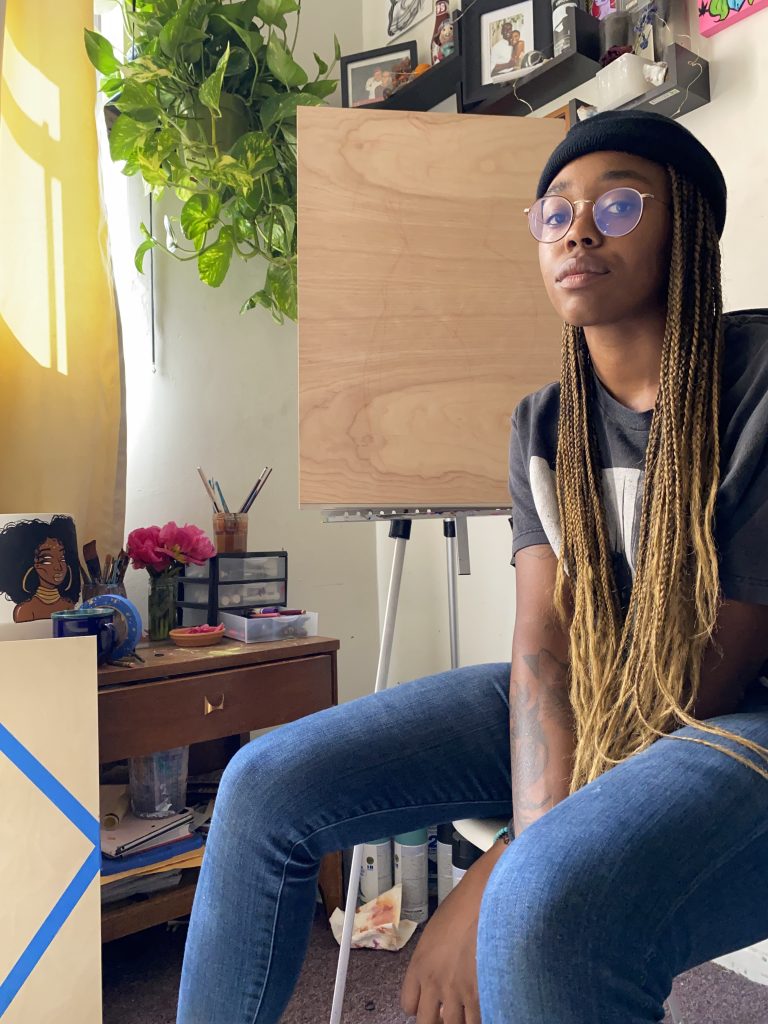
We love how open and honest you are about your mental health on Instagram, can you say a bit more about why this is so important to share. I felt like at this time, It was time to share where I am and how I feel. I never liked talking about my mental health because it made me feel like a burden to others, but this time I knew that I wasn’t being open for me but for those who feel the same way and feel alone. I felt like it was important to let people to know that it is okay to be not okay.
